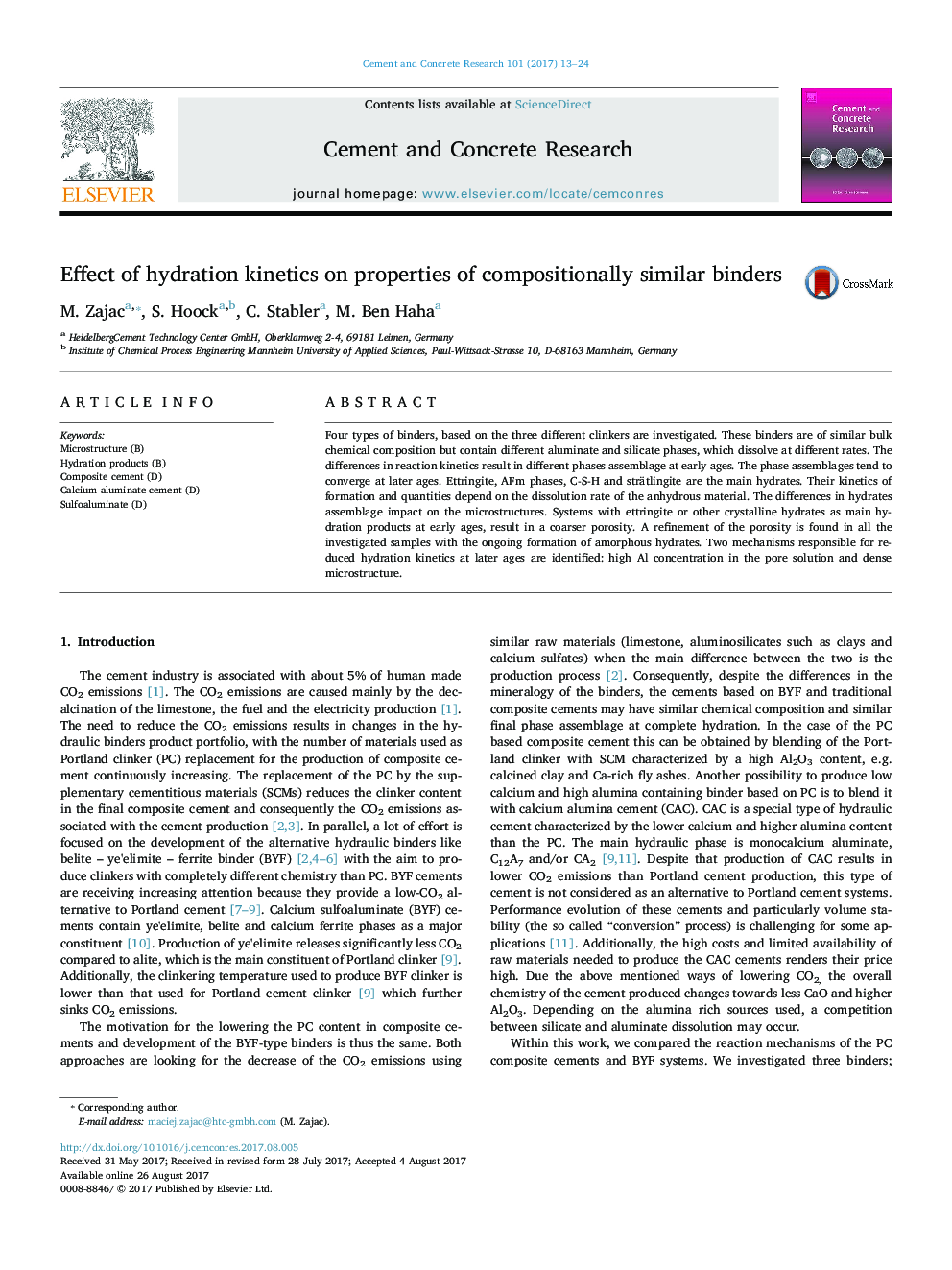| Article ID | Journal | Published Year | Pages | File Type |
|---|---|---|---|---|
| 5436986 | Cement and Concrete Research | 2017 | 12 Pages |
Abstract
Four types of binders, based on the three different clinkers are investigated. These binders are of similar bulk chemical composition but contain different aluminate and silicate phases, which dissolve at different rates. The differences in reaction kinetics result in different phases assemblage at early ages. The phase assemblages tend to converge at later ages. Ettringite, AFm phases, C-S-H and strätlingite are the main hydrates. Their kinetics of formation and quantities depend on the dissolution rate of the anhydrous material. The differences in hydrates assemblage impact on the microstructures. Systems with ettringite or other crystalline hydrates as main hydration products at early ages, result in a coarser porosity. A refinement of the porosity is found in all the investigated samples with the ongoing formation of amorphous hydrates. Two mechanisms responsible for reduced hydration kinetics at later ages are identified: high Al concentration in the pore solution and dense microstructure.
Related Topics
Physical Sciences and Engineering
Engineering
Industrial and Manufacturing Engineering
Authors
M. Zajac, S. Hoock, C. Stabler, M. Ben Haha,
